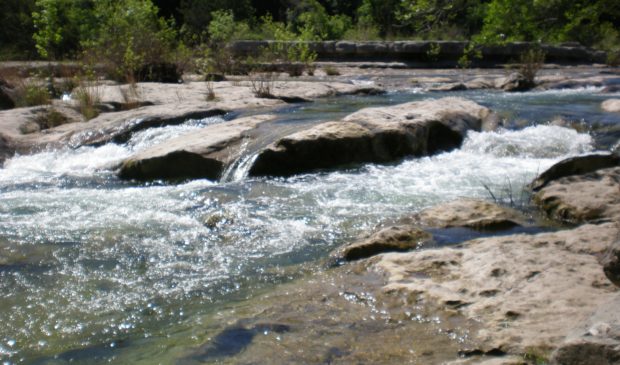CodeNEXT Draft 3 makes significant changes to water-quality and drainage regulations
Friday, March 2, 2018 by
Jessi Devenyns After months of waiting, last month the third and final staff draft of CodeNEXT was released. After allowing adequate reading time, on Feb. 21, Matt Hollon, the manager of the Watershed Protection Department Planning Division, gave the Environmental Commission an overview of the relevant changes between drafts two and three.
“Spoiler alert, there are almost no changes,” explained Hollon. “I actually had to read pretty closely to tell the difference between these two (drafts)” in most sections, he said.
In fact, when you really dig down into the brand-new, shiny CodeNEXT, it is “a whole lot like our current code,” said Hollon. Besides controls on water quality and drainage, regulations implemented during the last 30 or 40 years will remain as they are.
The biggest changes will occur in the water-quality and drainage proposals. When Hollon discussed the proposed regulatory changes in water quality, he boiled it down by simply saying, “In essence, we’ve moved to a green stormwater infrastructure for water quality.”
The idea is to use controls like rain gardens, green roofs, rainwater harvesting and porous pavement to capture and treat the water that flows off properties to help simultaneously with drainage and irrigation. In a press conference, Hollon noted that these controls would help incrementally halt an increase in localized flooding. He clarified that it would not fix flooding overnight, just prevent the phenomena from worsening.
Currently, the Watershed Protection Department estimates that 2,000 properties experience localized flooding issues due to stormwater runoff and undersized drainage systems.
Not only are these green stormwater controls intended to help with site runoff, but the plan is intended to make irrigation more affordable both by creating a system to use previously collected water and by the city offering credit for holding on to that stormwater. Hollon described the solution saying, “We can basically have our cake and eat it too.”
However, these requirements are no longer just applicable to commercial sites. Now single-family, two-family and “missing middle” projects are required to implement green stormwater infrastructure. Historically, environmental and drainage regulations have not been applied at the individual lot level.
Hollon told the Austin Monitor at the press conference that these new infrastructure requirements would be mainly used for properties currently being built or redeveloped and would be implemented at the subdivision level.
According to him, “CodeNEXT is asking all projects to do their fair share” in addressing existing downstream localized flooding.
In response to these new proposed requirements, Commissioner Andrew Creel noted at the Environmental Commission meeting, “When the public thinks there’s some sort of engineering advocacy group that’s trying to make some sort of money grab (because of these new requirements) … I expect a fair amount of complaints to come to the city in that regard.”
To compound Creel’s misgivings, Hollon revealed that Watershed Protection is recommending that, as long as they do not increase adverse impacts to drainage, public roadworks are exempt from drainage requirements “due to the very difficult circumstances of the roadway project itself.” According to him, “roads have to spend about 30 percent of their budget on drainage.”
Commissioner Hank Smith noted that this exemption could become a sensitive issue. He expressed his concern that if the department poses this recommendation incorrectly, it would appear as if the city wanted to exempt itself automatically, rather than consider the conditions.
Hollon insisted that the city thinks that roadwork projects should “be treated differently” due to the public benefits that roads provide.
To further complicate an already convoluted piece of code, Commissioner Kathleen Coyne noted that a new model is coming out from the National Weather Service that is likely to increase the size of flood plains throughout Central Texas. She expressed concern that it was not being properly weighted in the plans that staff is designing for CodeNEXT.
In an effort to allay her worries, Hollon explained that no matter what the new flood maps show, “We wouldn’t have any changes of code.”
Watershed Protection is already crunching numbers to understand how the new model would affect properties in the Austin area.
Curious about how we got here? Check out the Austin Monitor’s CodeNEXT Timeline.
Photo by Julia Duffy JTduffy (Own work) [Public domain], via Wikimedia Commons.
The Austin Monitor’s work is made possible by donations from the community. Though our reporting covers donors from time to time, we are careful to keep business and editorial efforts separate while maintaining transparency. A complete list of donors is available here, and our code of ethics is explained here.
You're a community leader
And we’re honored you look to us for serious, in-depth news. You know a strong community needs local and dedicated watchdog reporting. We’re here for you and that won’t change. Now will you take the powerful next step and support our nonprofit news organization?









